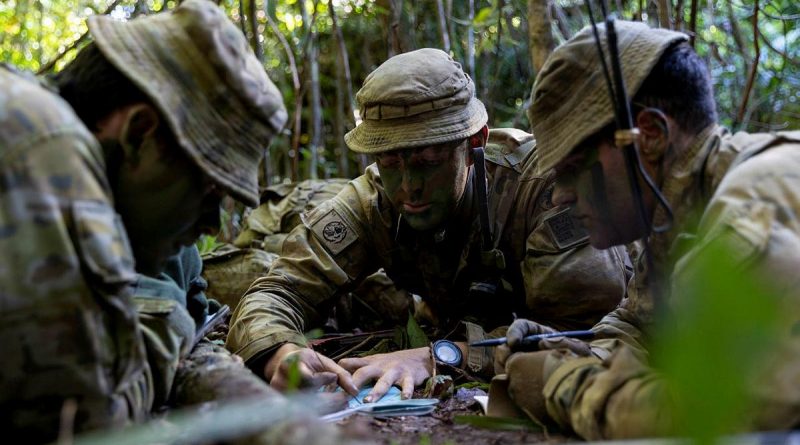The Urgent Need for Recognition and Support for Australia’s Veterans and Families.

By Luke Gosling OAM MP
For many Afghanistan veterans and their families, the withdrawal from Kabul in 2021 and the imagery of the triumphant Taliban screamed failure.
Not since the fall of Saigon in 1975 had Australians been confronted with shocking images of our failed involvement in a foreign war.
Aware of our Vietnam Veterans’ experience, our Afghan veterans wonder how they will be remembered.
Afghanistan represents Australia’s longest military engagement.
Of the tens of thousands of service personnel deployed there, 41 were killed – their families left irreversibly damaged. Another 300 soldiers were seriously injured. Countless others deal with physical, psychological, and moral injury.
It is important to remember that Australia committed its defence personnel and civilians to the war to fulfil our U.S. alliance obligations after 9/11 and to deny terrorist organisations the use of Afghanistan as a training ground for renewed attacks around the world.
Our loss in this war, the perception of collective punishment for alleged war crimes, the sensationalism of sections of our media, and our failure to hold people accountable for poor decisions during the war, and in its aftermath, have had a significant impact on that war’s veterans.
It’s why I fought for the Royal Commission into Defence and Veteran Suicide, as well as for 3,000 Afghanistan veterans to retain their Meritorious Unit Citation.
 Photo: Luke Gosling OAM MP – taken in Kandahar 2003 providing security during the election process for the Loya Jirga Constitutional Convention
Photo: Luke Gosling OAM MP – taken in Kandahar 2003 providing security during the election process for the Loya Jirga Constitutional Convention
I am a veteran, and although I did not serve with the Australian Defence Force in Afghanistan, my experience with the country began 20 years ago when I worked to secure an Afghan-led democratic election process in southern Afghanistan.
I experienced some of the beauty and terror of that place and the pride of the people, as well as the complexity of the human landscape and the difficulty of the operating environment.
It had to be experienced to be believed.
I do understand why many of our veterans question how they could be judged harshly for their service – like Vietnam veterans before them – and why no one seems to be advocating for them.
In the face of consistent negative media coverage, I will continue to argue that the many should not be punished for the sins of the few.
Veterans of Afghanistan wonder whether our nation will forget their service or whether we will remember them and recognise that this was a real war, a hard-fought war, and that a cruel and insidious regime was held at bay for over twenty years.
The work of our veterans allowed for the building of local infrastructure, the education of women and girls, and the expansion of democracy.
Their leadership demonstrated to Afghanistan’s proud people that those who rule them should do so with dignity and respect.
Veterans of Afghanistan wonder whether our nation will forget their service or whether we will remember them and recognise their service.
There is much more we can do today to better support our Afghanistan veterans and families, beginning by commemorating their service with a welcome home, perhaps around the time of the AWM redevelopment opening, and acknowledging our failings and learning how we can do better.
We owe it to the veterans and their families to address this issue formally, to provide them a voice, and to listen.
But let us not confuse this proposed review with the important work of the Royal Commission into Defence and Veteran Suicide that will report this year, nor with the work of the Special Investigator.
The review I am recommending should be a detailed research project, with stringent ethical oversight and broad terms of reference, that recommends positive actions to address the human impact on returned Australian soldiers and families of two decades of war in Afghanistan and the Middle East more broadly.
But aren’t there reviews galore already? What will another one add?
It’s true that the Australian Institute of Health and Welfare, which in 1999 found that the children of Vietnam veterans were three times more likely to die from suicide than their peers, has also pioneered extensive research into veteran suicide among the Afghanistan and Iraq veteran cohorts.
Ample health-related reviews have also been commissioned by the departments of veterans’ affairs and defence, but none of them could seriously delve into the crucial question of the health impact of how our civilian and military leaders, senior public servants, and media all handled our longest war.
Such a project, led by veteran academics – neither commissioned nor directed by government – would make veterans and their families feel valued, would reinforce the importance of the purpose that is derived from military service, and give policymakers crucial insights to enhance the lives of those that serve, and will serve, our great nation.
It would also help Australia live up to our promise within the Veterans’ Covenant: ‘For what they have done, this we will do.’
 Modernising DVA’s ICT is one of our top priorities and a focus of the Royal Commission’s Interim Report.
Modernising DVA’s ICT is one of our top priorities and a focus of the Royal Commission’s Interim Report.











